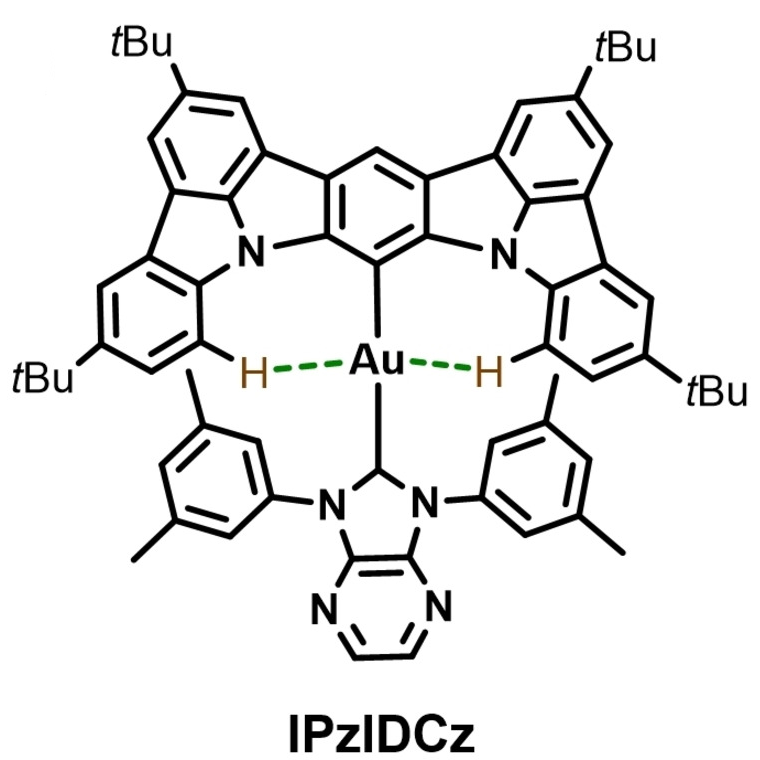Gold(I) complexes can have interesting luminescent properties. However, they are rarely used in organic light-emitting diodes (OLEDs) because the typical linear two-coordinate structure of gold(I) complexes lacks stability.
Kai Li, Chuluo Yang, Shenzhen University, China, and colleagues have developed a new class of robust gold(I) complexes with thermally activated delayed fluorescence (TADF) properties. The researchers first carried out a palladium-catalyzed borylation of a carbazole derivative. The resulting product was then reacted with a gold precursor complex of the type NHC–Au–Cl (NHC = N-heterocyclic carbene) to form gold(I) complexes (IPzIDCz, pictured below).

The rigid aryl ligand and the twisted orientation of the carbene ligand force the gold nucleus into a “groove” stabilized by nonvalent Au···H hydrogen bonds. The structure was verified using single-crystal structure analysis and NMR spectroscopy.
In an organic host material, the IPzIDCz gold(I) complex demonstrated a high emission efficiency of 76 %, a short delayed fluorescence lifetime of 1.2 µs, and good thermal and photostability. Vacuum-deposited OLEDs containing the complex show promising properties with a maximum external quantum efficiency (EQE) of over 23 % and good operational stability. The work provides a path to robust mononuclear gold(I) emitters, which may have an impact on the future design of luminescent transition-metal complexes.
- Au⋅⋅⋅H−C Interactions Support a Robust Thermally Activated Delayed Fluorescence (TADF) Gold(I) Complex for OLEDs with Little Efficiency Roll‐Off and Good Stability,
Xingyu Feng, Jian‐Gong Yang, Jingsheng Miao, Cheng Zhong, Xiaojun Yin, Nengquan Li, Chao Wu, Qizheng Zhang, Yong Chen, Kai Li, Chuluo Yang,
Angew. Chem. Int. Ed. 2022.
https://doi.org/10.1002/anie.202209451



